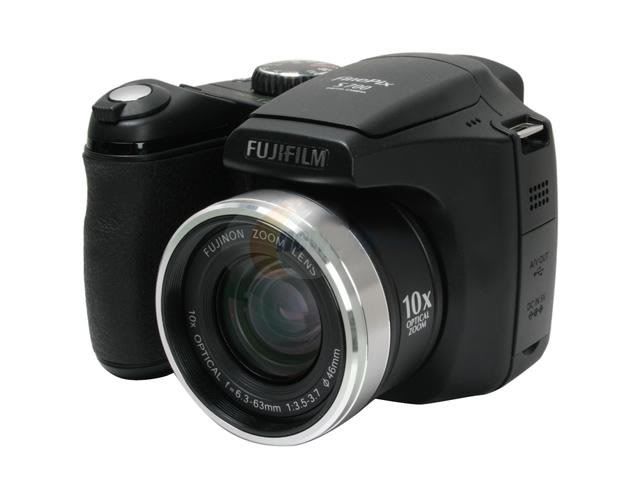Difference between DSLR / DSLR-like / Point & Shoot Cameras
I never knew the difference before so I did a little research. Here's a condensed description of these different types of cameras. If you don't like reading the long post, you can skip over to the end to see a summary & pictures. I spent 3 hours compiling this, I Hope you find it useful.
What is a DSLR Camera?
A digital single-lens reflex camera (digital SLR or DSLR) is a digital camera that uses a mechanical mirror system and pentaprism to direct light from the lens to an optical viewfinder on the back of the camera.
DSLRs are often preferred by professional still photographers because they allow an accurate preview of framing close to the moment of exposure, and because DSLRs allow the user to choose from a variety of interchangeable lenses. Most DSLRs also have a function that allows accurate preview of depth of field.
Many professionals also prefer DSLRs for their larger sensors compared to most compact digitals. DSLRs have sensors which are generally closer in size to the traditional film formats that many current professionals started out using. These large sensors allow for similar depths of field and picture angle to film formats.
Digicams (compact 'point-and-shoot' digital cameras)
Digicams, some commonly referred to as 'point-and-shoot' cameras because of their ease of use, can usually be operated at arm's length using only the LCD at the rear of the camera. Some models also have simple optical viewfinders like traditional compact 35mm film cameras. Digicams lack the ability to accept interchangeable lenses.
Most digicams are manufactured with a zoom lens that covers the most commonly used fields of view, with "super-zoom" models becoming more popular. Digicam lenses can be adapted to telephoto or wide-angle.
Digicams are slower in image capture (time measured from pressing the shutter release to the writing of the digital image to the storage medium). As such, these cameras present a significant disadvantage for action, wildlife, sports and other photography requiring a high burst rate (frames per second).
SLR-like cameras – "bridge cameras"
Bridge digital cameras are a type of high-end digital camera. They offer larger zoom ranges, better optics, and more manual controls than the P&S. They are comparable in size and weight to the smallest DSLRs, but they lack the removable lenses, larger sensors, mirror, and reflex system that characterize DSLRs. The term "bridge" characterizes the way in which these cameras fill the niche between the DSLRs and the compact digital cameras. Although bridge cameras are closely related to consumer compacts, they are sometimes confused with DSLRs due to their similar bodies and large zoom lenses. Almost all bridge digital cameras feature full manual controls over shutter-speed, aperture, ISO, white-balance and metering. Generally, their feature sets are similar to DSLRs, except for a smaller range of ISO sensitivities due to their smaller sensors (a DSLR has a 35mm, APS, or 4/3 size CCD or CMOS) and fewer expandability options (such as interchangeable lenses, battery grips, and wireless flash options).
Bridge digital cameras with their fixed lenses aren't usually subject to dust from outside the camera settling on the sensor. However having fixed lenses they are limited to the focal lengths they are manufactured with, except for what is available from attachments. Manufacturers have attempted (with increasing success) to overcome this disadvantage by offering extreme ranges of focal length on models known as superzooms, some of which offer far longer focal lengths than readily available DSLR lenses.
SUMMARY: (click picture for large size)
Here's a video comparison:
DSLR Vs Point-And-Shoot Digital Cameras (Technology & Cars: Digital Cameras: Buyer's Guide)
DSLR (Nikon D60)
Point and Shoot (Canon IXUS 80is)
Bridge Camera (FujiFilm S700)
*
Results 1 to 10 of 15
-
04-27-2009, 05:02 AM #1
 Difference between DSLR / DSLR-like / Point & Shoot Cameras
Difference between DSLR / DSLR-like / Point & Shoot Cameras
-
04-27-2009, 05:11 AM #2
-
04-27-2009, 11:01 AM #3
-
04-27-2009, 11:07 AM #4
@Mastersun: thanks ani nga thread...
I've done some research regarding sa Cam nga akong gamit(DSC H7) but it seems kuwang pa sa info...
Good thing that you shared this info... NaHayag2an na jud ko... heheh...
Pasencya namo guys karon paman ghud ko aning Photography...
-
04-27-2009, 02:38 PM #5
i preffer using my versatile "bridge-camera" over my dslr.. all purpose use with less weight.. i only use my dslr when im shoot-specified, so i can pre-change the lens at home, less dust incursion
-
04-27-2009, 08:04 PM #6
Same here. I love my bridge camera. Its handy and has almost the same features as a dslr. I'm buying extra lenses & filters for it.
-
04-29-2009, 09:01 PM #7
other comments from expert photographers are welcome! So we'll all learn!
-
05-14-2009, 11:38 PM #8
did you guys see the comparison table chart? Maybe its just my work computer..
-
05-15-2009, 12:15 AM #9Senior Moderator

- Join Date
- Sep 2004
- Posts
- 4,017
please credit the author or at least the source of the article
-
05-15-2009, 09:17 AM #10
The descriptions are taken from the internet, Wikipedia & some other sites. I forgot the names. I made the comparison chart myself after getting all the data to make it easier and simpler for anyone who needs a comparison.
Advertisement
Similar Threads |
|









 Reply With Quote
Reply With Quote


